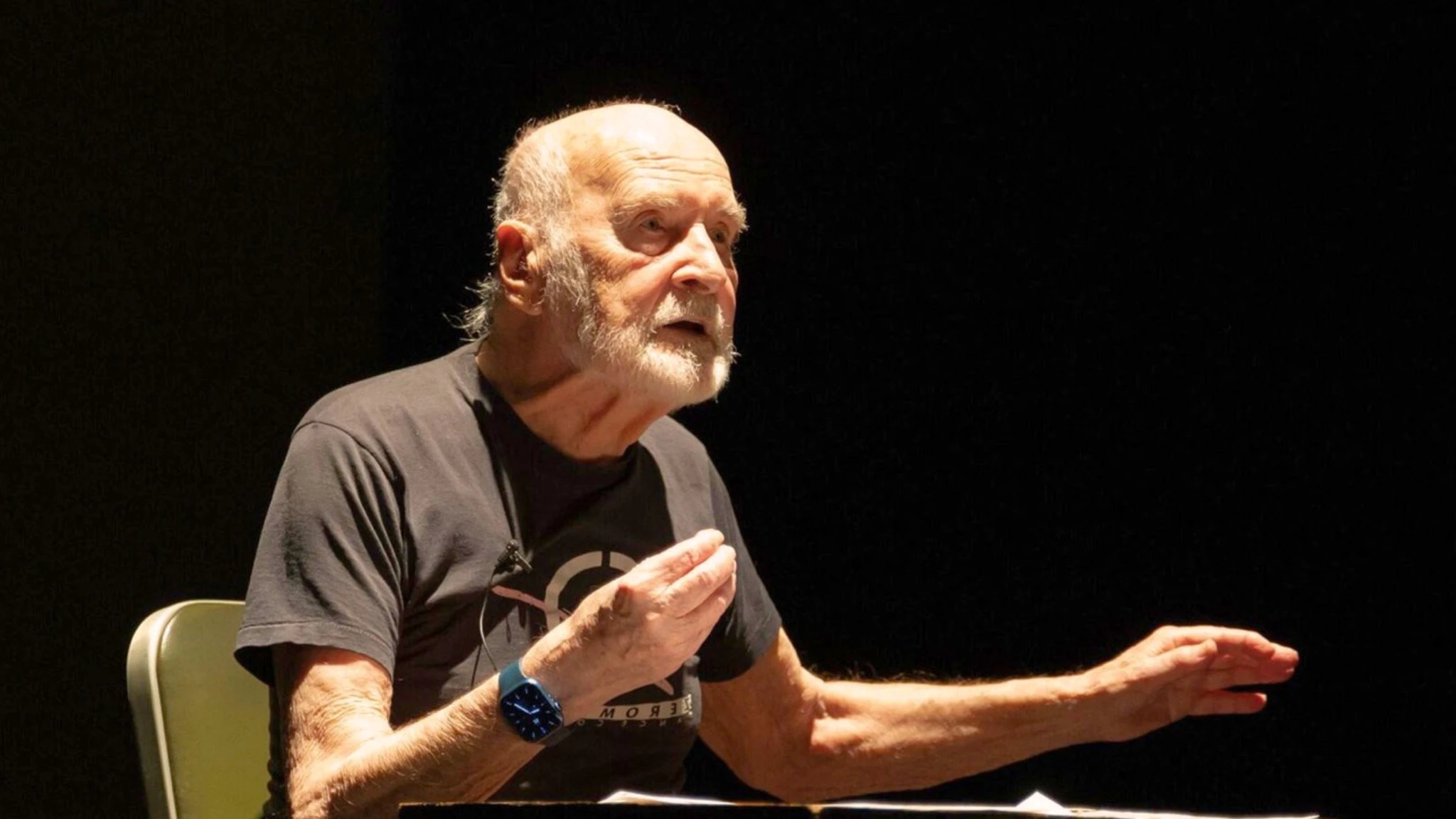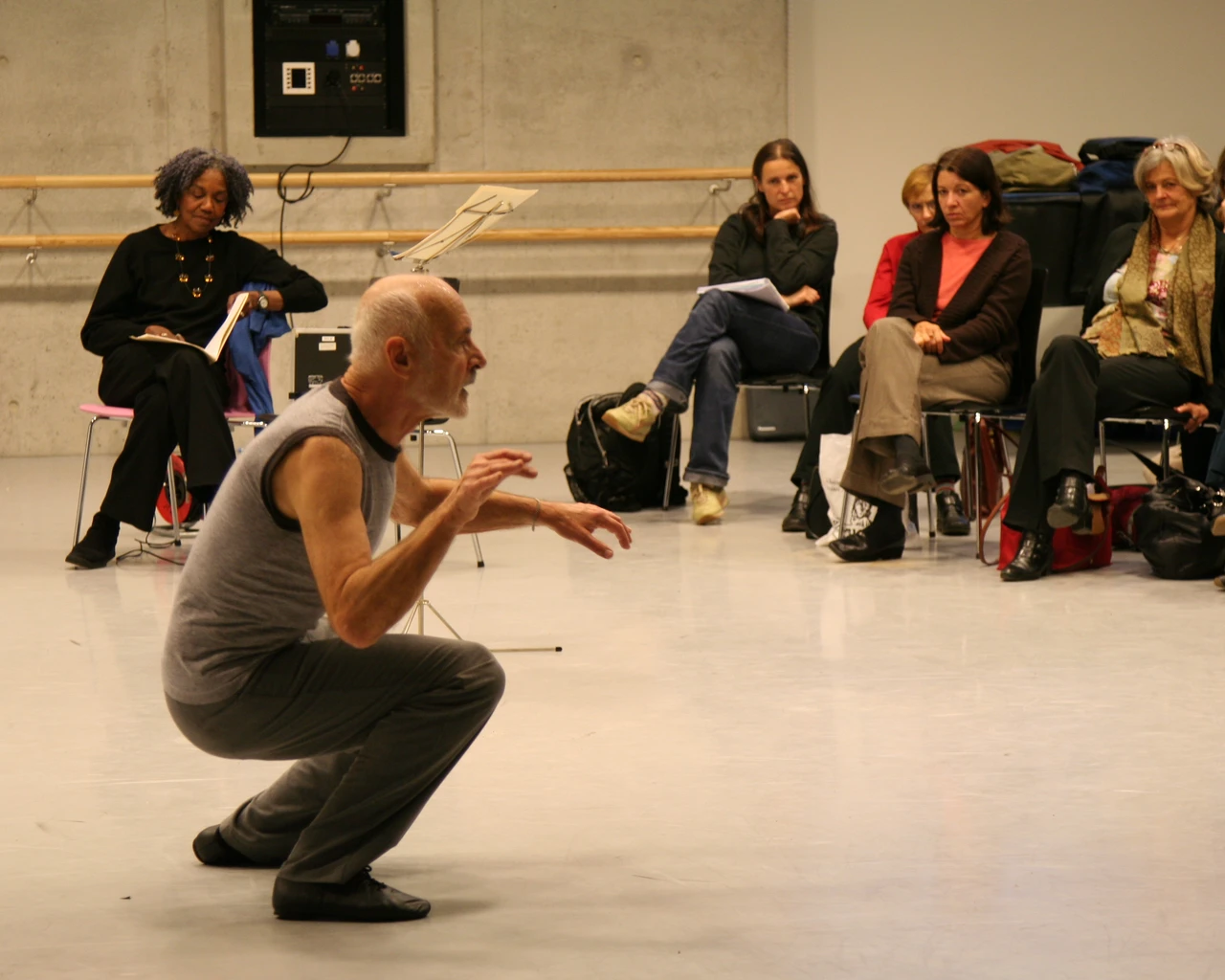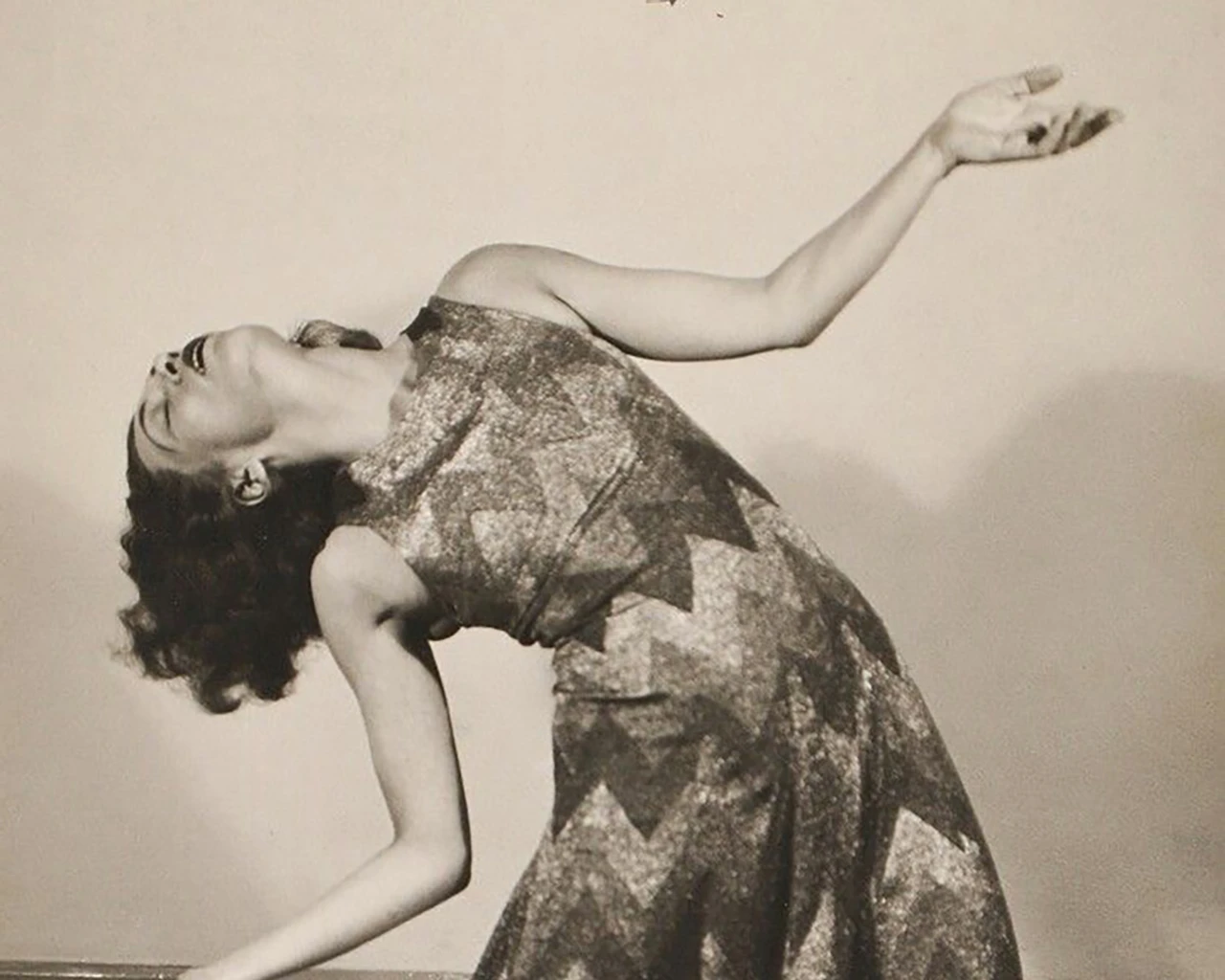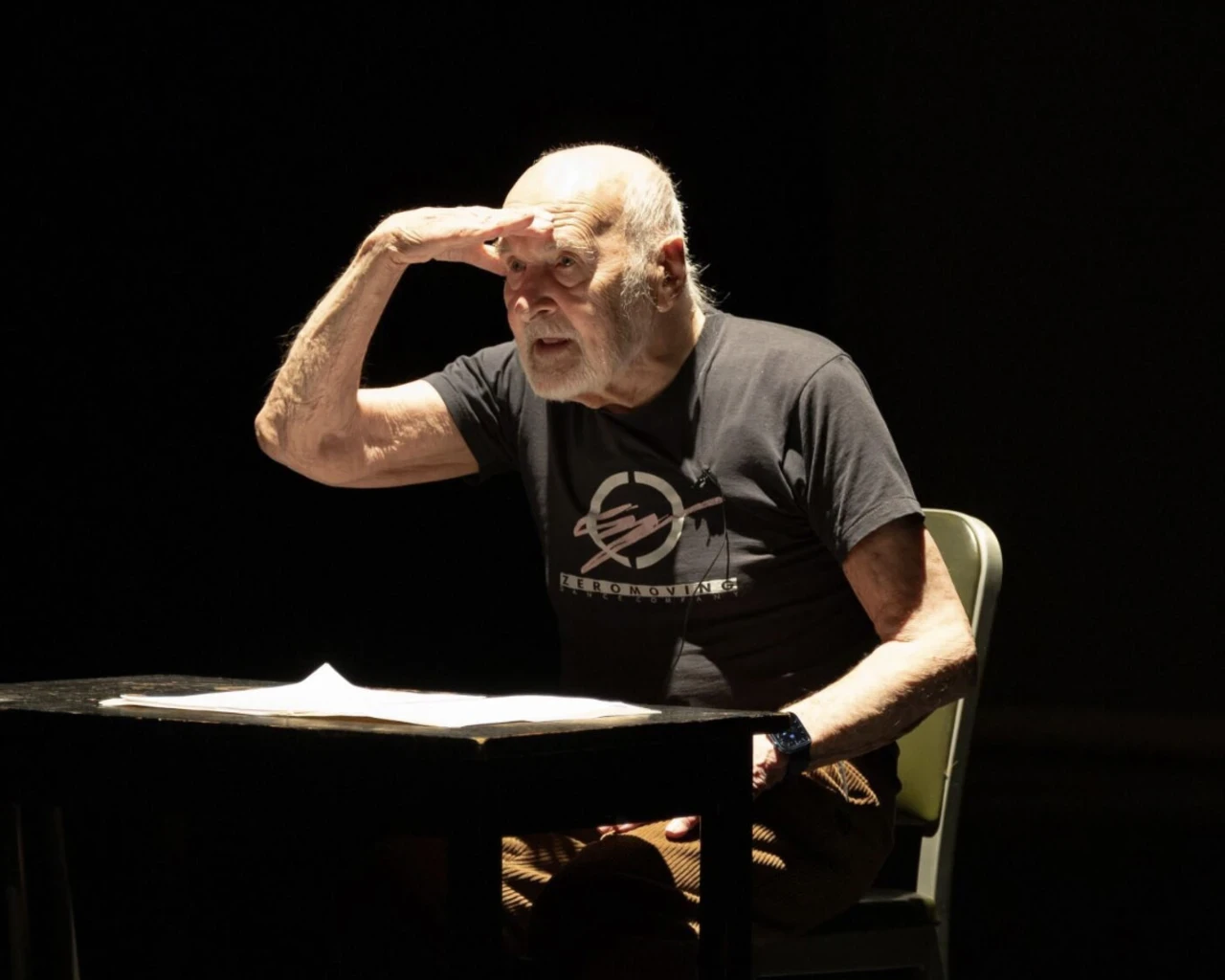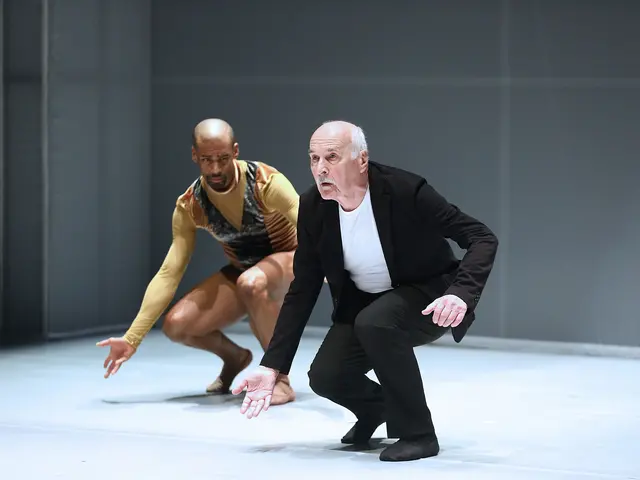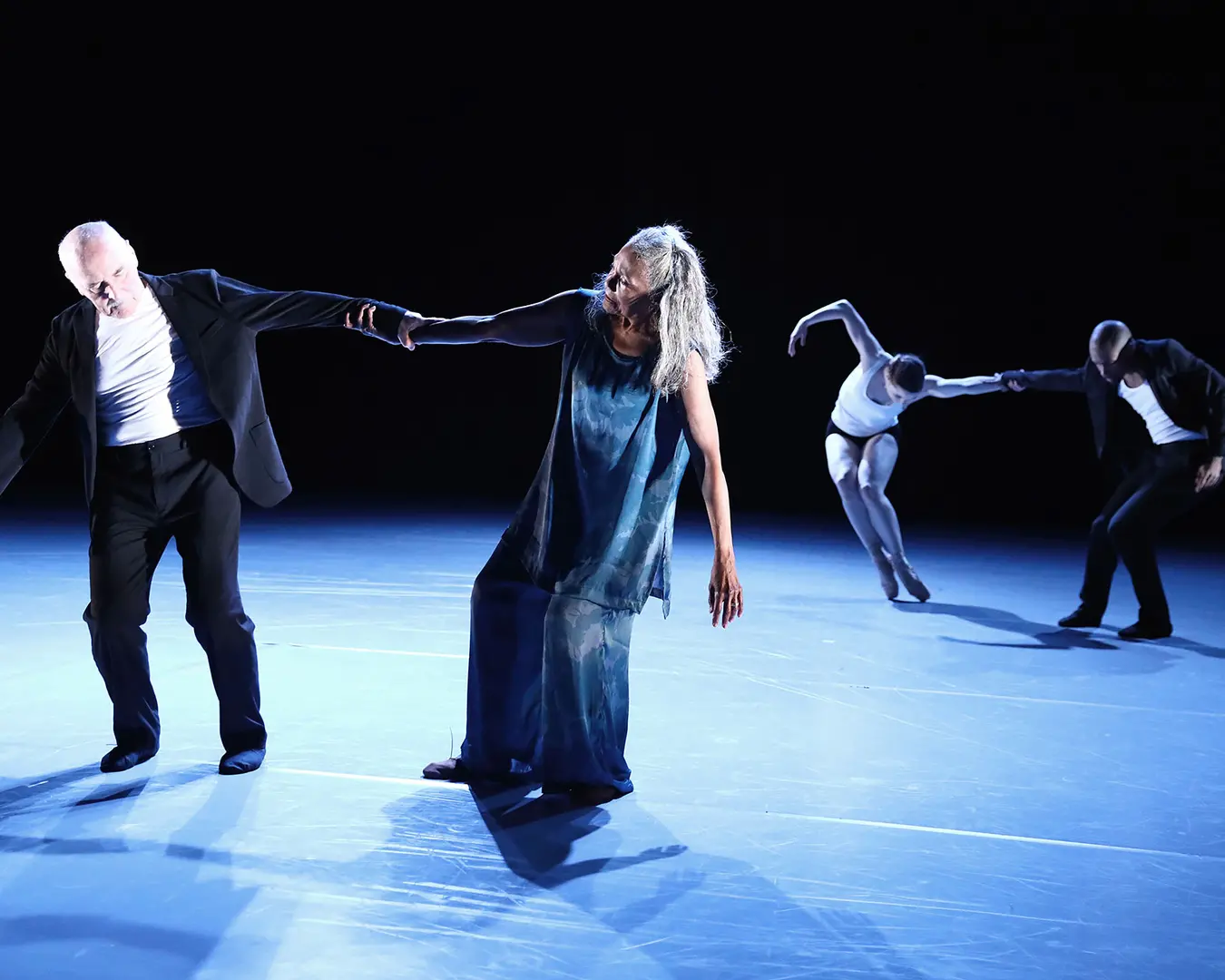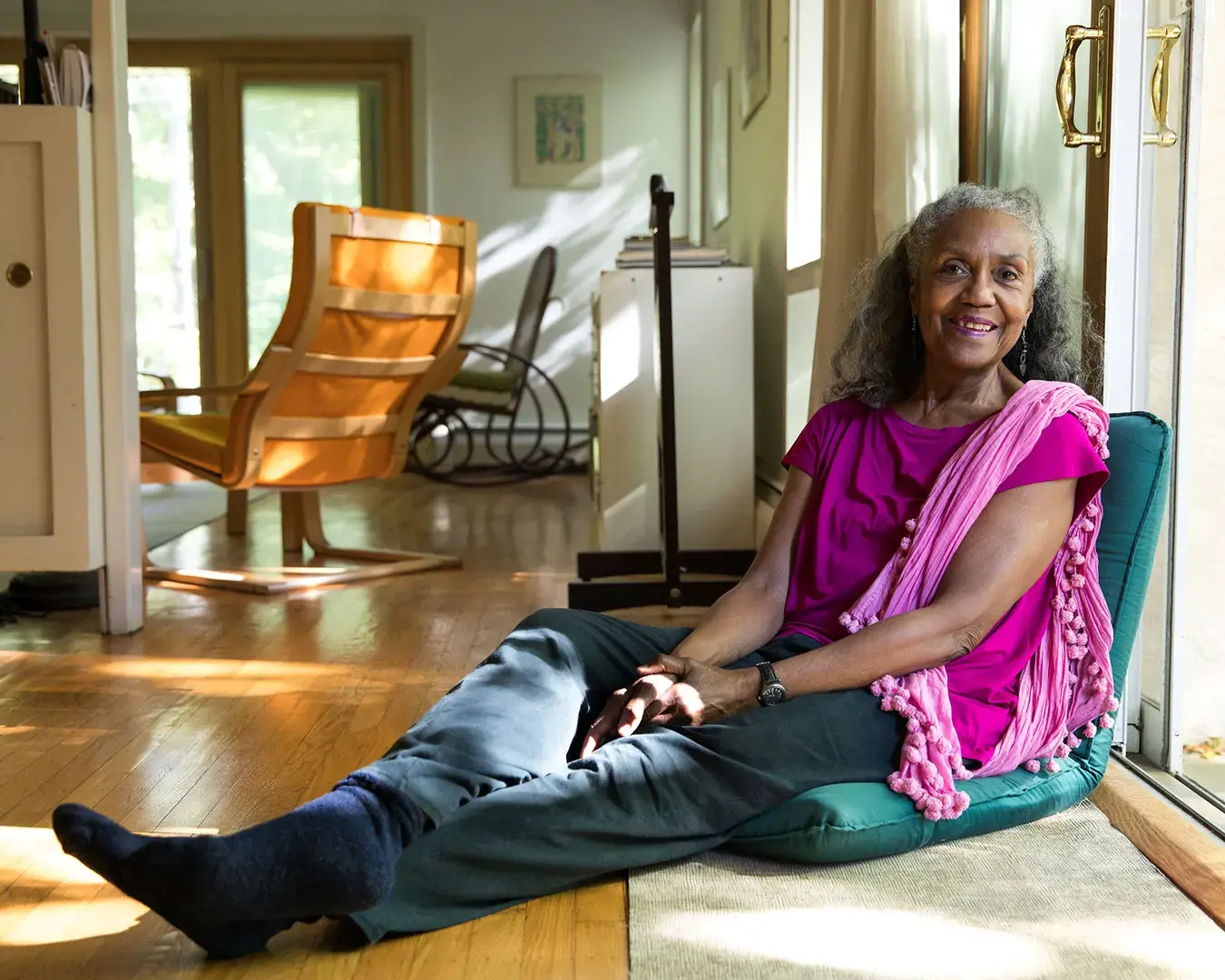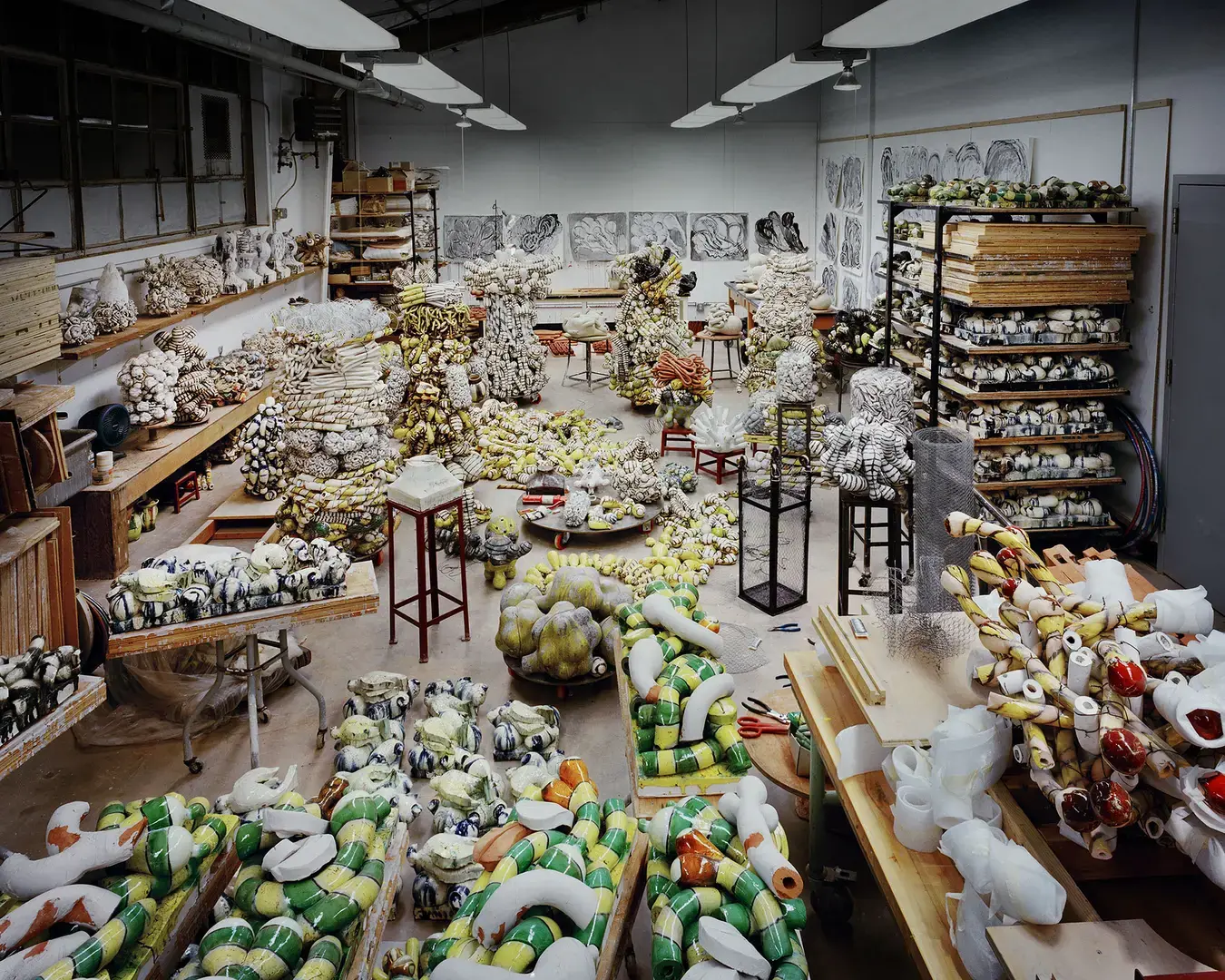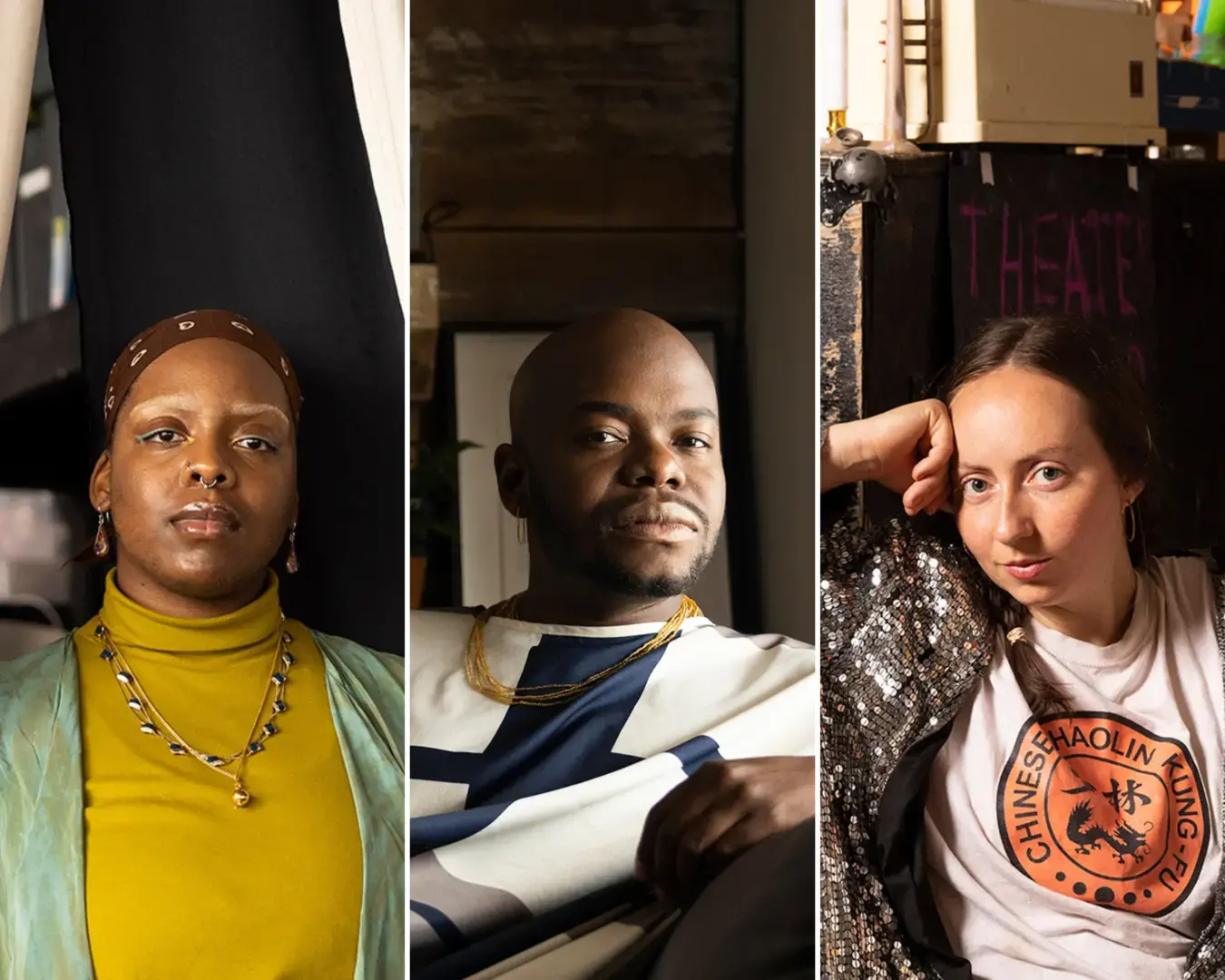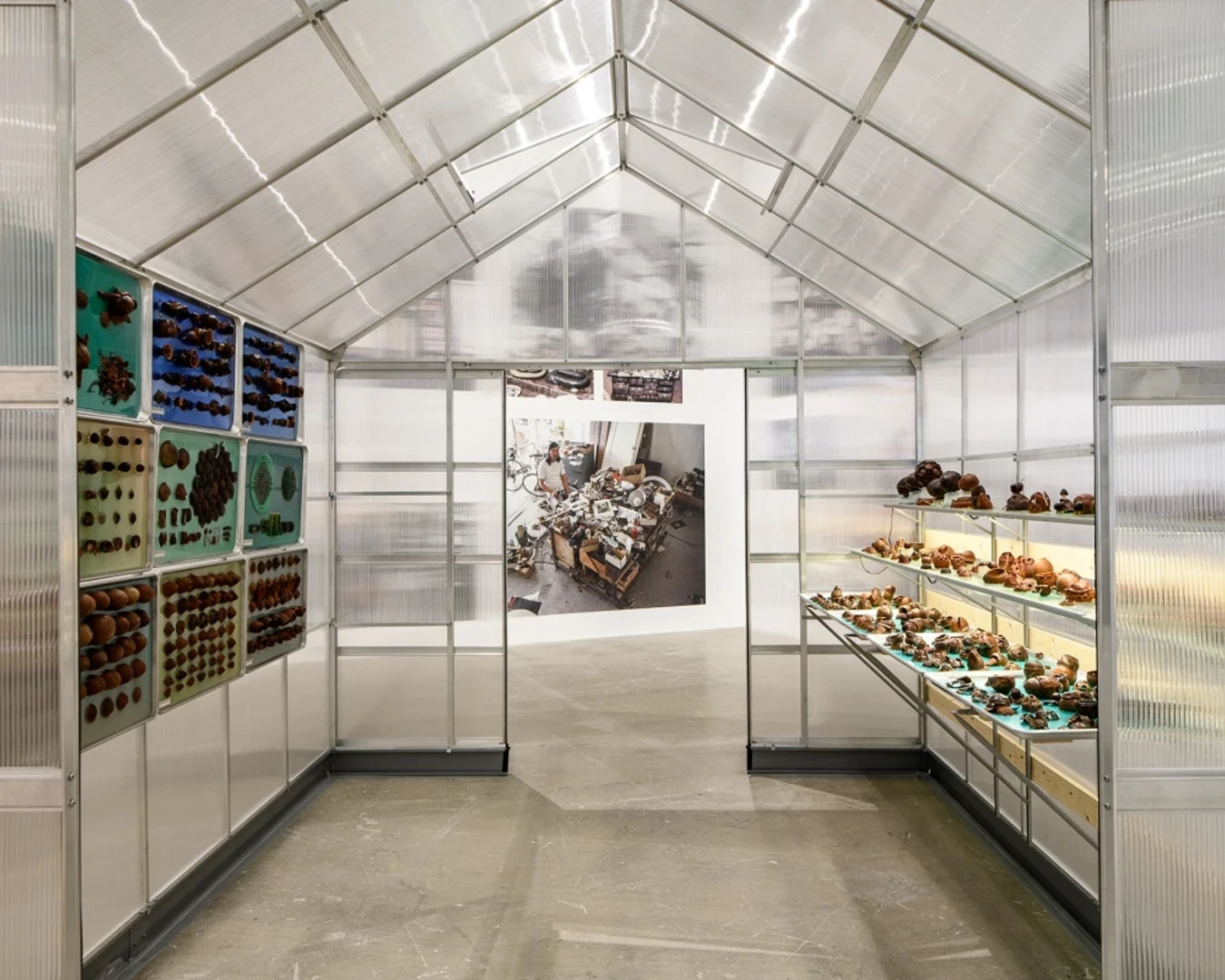In April of 2025, choreographer, dancer, and Pew Fellow Hellmut Gottschild presented his lecture with performance elements, Of Touching and Being Touched: Memories, thoughts, and reflections on performance, at Temple University. This reworking of his lecture-performance from the 2000s illuminates his unique approach to the tactile nature of performance and the body’s relationship to movement and space. Gottschild's perspective is informed by his six-decade career and the theories of choreographer Mary Wigman—under whom he studied and was a teaching assistant in the 1960s—and French actor, director, and mime artist Jean-Louis Barrault.
A seminal figure in Philadelphia dance, Gottschild was part of the first cohort of Pew Fellows in 1992. He cofounded the contemporary dance company Gruppe Motion in Berlin and continued to work with the company after moving to Philadelphia in 1968. In 1972, he founded Zero Moving Dance Company (later ZeroMoving), a leading modern dance company that performed throughout the Philadelphia region and toured in Europe.
Of Touching and Being Touched was presented on the occasion of the 50th anniversary of Temple University’s Dance Department, where Gottschild served on the dance faculty and is now a professor emeritus.
Here, we offer excerpts of the lecture-performance, along with a downloadable PDF of the full essay with photos.
Download Hellmut Gottschild's full essay "Of Touching and Being Touched"
On dance as a tactile experience, Gottschild says:
I would like to complement the notion of dance as a solely visual experience with that of it being tactile. As I look at you, I cannot help seeing each of you in context—of the person next to you, the group around you, the entire audience, the background, the room, etc… The further I move back, the larger my field of vision becomes. I may try to block out the peripheral vision but even the frame of my hand becomes a reference. I cannot help seeing you in relation to something, or someone, in comparison. Sometimes we call that 'objective.' We know that, in order to be objective, we mustn't be too close to our object, must distance ourselves from it. This critical distance, I believe, is an important and necessary position. But something is lost: it doesn't allow us to fully experience—unless its complement is equally present, touch. Is it possible to touch critically? No. In touching, the surroundings, the context, the critical position, disappear—it's just you and me. And: when I touch an object—or a person—I cannot help being touched, that is, being affected. I have changed from observer to participant. Here the other has become a little less "Other." And this is how I want to experience dancing—as tactile at least as much as visual.
On dancing WITH space:
Offering the words of Mary Wigman, Gottschild quotes: "Time, force, and space: these are the elements that give the dance its life. Of this trinity of elemental forces, it is space which is the dancer's actual sphere of activity, which belongs to him because he creates it. Not the tangible, the limited and limiting space of concrete reality, but the imaginary, irrational space of the danced expansion, that space which can erase the boundaries of all corporeality and can turn the gesture, flowing as it is into an image of seeming endlessness in which it seems to lose itself in self-completion, to radiate, to flow out, to breathe itself away".
He continues: Mary Wigman sees the living, energized, and unlimited space not only as extension of self but as a partner, so equal to herself that she speaks of her marriage with it. She has the desire to give herself to it—to radiate herself into it; to flow, pour, out into it; to breathe herself away.
Radiating, pouring out, breathing oneself away. . .
Those words are about giving, giving oneself, giving of oneself, giving oneself up, in the end of dissolving oneself. I must say, they touch me deeply. That is, today. I admit that, as her student, I had largely dismissed them as flowery speech. But then, after coming to America and seeing everyone dancing t h r o u g h but hardly anyone w i t h the space, I discovered that my body had been more receptive to her teaching than my brain, had understood and internalized without my even realizing it: "Yes, this is what I feel, desire, do in my best moments!"
… Mary, the mystic, called her living space 'imaginary' and 'irrational.' Now, three generations later, I see it as quite real. In Wigman's time, 'energy' was not the household word it is now. But that's, of course, what it is: energy.
On the liveliness of movement:
Gertude Stein, a poet and Mary Wigman's contemporary, wrote: “If the movement that is any movement is lively enough perhaps it is possible to know that it is moving even if it is not moving against anything."
So, according to her, when movement is lively enough it can reveal itself as being in motion. We need no contrast or context as, for example, something that is at rest. She says 'lively', not 'skilled' or 'mastered' or 'virtuoso.' No, we live, are in touch with, not merely execute, the movement…
Does this mean that there should be no technique? Not at all. It simply is to say that the dancer is a living, feeling being who is served but not defined by skill. We must not allow the body to be colonialized by a technique, for each technique embodies beyond certain skills also style, that is, a point of view, exclusive and, in itself, inert. The ‘lived movement' is a journey through states of being and feeling, not to "express'' them but to listen to and follow their rise and fall, experience them and bring them to resonate. Technique must be adjustable, and again and again, adjusted means that serves, serves in clearing the way from impulse to form, in making the latter repeatable and, like a mantra, to retrace the connection from the form back to its origins. By thus filling the movement with life and inhabiting it, dancers could, in the truest sense of the phrase, find themselves: in their moving.
On moving from silence:
When I speak of silence, I do not only refer to the absence of sound. I mean an external and internal silence in which the onslaught of attitudes, habits, intentions, vanities come to rest. Only in silence do I become aware of my breathing which is exchange. Only in silence can I listen to my heartbeat…
My dance troupe was called ZeroMoving and often people asked me for the meaning of that name...Well, the word 'zero' comes from Arabic and translates, amongst other things, into 'empty.’ The empty moving? What's that? For the dancer it means: let go. Let go, at least for the time being, of skills and attitudes in which you like yourself and feel secure, habits and preferences, even certain goals, in order to find ways that are not already pre-programmed in your head. For the choreographer going to this point, zero opens the possibility to discover the language that each new work demands. In other words, empty is not nothing. I look into a container and it is empty. What I see is not nothing. I see more of the container.
Like the ZeroMoving, space is not nothing. Imagine for a moment that we are not surrounded by air but by water. We feel its resistance and how its current moves us. Every active movement I make ripples the water infinitely. I do not know when and where that movement comes to rest. If you are in its path, you will be moved. If you move actively, I shall receive your movement and be moved. If I resist—well that, too, is movement.
Of Touching and Being Touched is published here by permission of the artist and Temple University.
Download Hellmut Gottschild's full essay "Of Touching and Being Touched"
